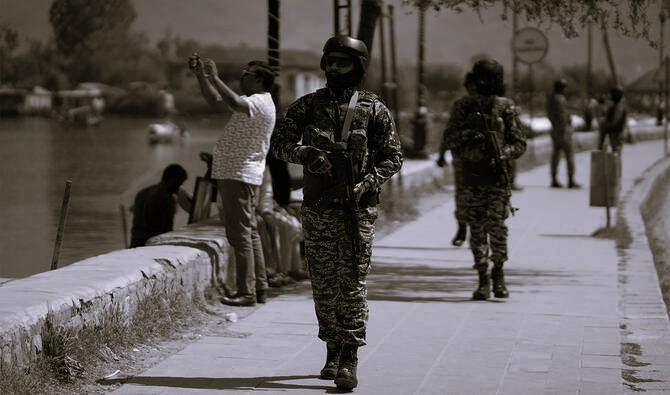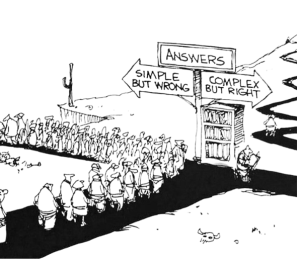Time and again, when a crisis or elections loom, the BJP government shifts focus to headline-worthy achievements. Over a month after 26 people lost their lives in the Pahalgam terror attack, intelligence failures remain unaddressed and the perpetrators remain free. Meanwhile, the ultra-nationalists continue celebrating the government for ‘taking revenge’ and ‘striking back’.
In a region known to be one of the most militarized zones in the world with 1 personnel for every 30 civilians, the government failed to prevent a massive attack on civilians. The Modi government has been promoting Kashmir as a tourist haven post the abrogation of Article 370. India even hosted the G20 tourism summit in Kashmir. This false promotion of the region as a tourist spot when Kashmiris constantly live in fear and horror, was exposed by the attack. As part of the state’s policy post-abrogation, Kashmiri land has been up for grabs for people from other states. Both the promotion of tourism and demographic changes are Israeli stratagems used by the Indian state to further the occupation of Kashmir.
In the aftermath of the attack, Muslims across India, particularly Kashmiris, were subjected to severe harassment, vilification, and threats by right-wing groups. Kashmiri shopkeepers, vendors, and students from Kashmir were assaulted and driven out of cities. Indian Muslims also suffered, exemplified by the lynching of a disabled young man in Mangalore for allegedly shouting “Pakistan Zindabad”. Himanshi Narwal, the widow of a naval officer killed in the attack, urged the public not to target Muslims or Kashmiris. In response, she faced online abuse from right-wing trolls. Similarly, Aarathi, the daughter of another victim, expressed gratitude toward two Kashmiri men who supported her after the tragedy was trolled online. The fact that many of these right-wing ultranationalists later celebrated the “Operation Sindoor” claiming it avenged the women who lost their husbands and fathers, is hypocritical and reveals the patriarchal logic at the heart of their narrative. By invoking the symbol of “Sindoor”, the operation’s framing reduces women to passive bearers of grief and honour, while glorifying violence as a means of restoring loss of men and national pride.
Operation Sindoor was launched on 7th May, allegedly targeting nine terrorist camps operated by Pakistan-based militant groups. However, Indian strikes also killed civilians in Pakistan, including women and children. In response, Pakistan began cross-border shelling in Poonch, killing over 50 innocent civilians, and leaving many injured. Operation Sindoor was celebrated by Indian ultranationalists as a masterstroke, with calls for war echoing as casually as if it were a video game or a sports match. Many justified the civilian casualties with the argument “Our people were brutally killed, so we must strike back.” Yet these same voices are notably silent when the Indian state routinely commits brutal mass-murders of Adivasis in mineral-rich regions, to facilitate the corporate plunder of resources. It raises the question: perhaps only those from a certain class or social standing are counted as “our people”, the ones deemed worthy of outrage, justice, and war.
What followed was a wave of arrests, censorship, and disinformation. Ali Khan Mahmudabad, a professor at Ashoka University, and a student in Hyderabad, were arrested and charged in connection with their social media posts. An FIR was lodged against AISA UP President Manish Kumar for a Facebook post demanding accountability and transparency. In Jammu & Kashmir alone, more than 3,000 people have been arrested, with at least 100 detained under the harsh Public Safety Act (PSA). In Assam, 42 individuals were jailed over alleged “pro-Pakistan” social media posts, and a sitting MLA was booked under the National Security Act (NSA). Uttar Pradesh has seen 30 arrests and 40 FIRs filed. In states like Gujarat, West Bengal, Maharashtra, and Kerala, students, artists, and ordinary citizens have come under scrutiny. Public figures such as Neha Singh Rathore and Madri Kakoti have faced intense public harassment. Peace rallies and gatherings were also targeted by the Sanghis. X accounts of Maktoob, Kashmiriyat, and the website of The Wire were blocked by India. Such brutal assault on dissent exposes the democracy we are living in.
After three days of military escalation that brought both countries to the brink of full-fledged war, the US intervened brokering a ceasefire. Ultimately, President Trump announced the news of a ceasefire before either government. This underscores how both nations are pawns rather than sovereign actors in the situation.
Over a month since the Pahalgam attack, the real costs remain unaddressed. While citizens faced harassment, arrests, and censorship for speaking out, Kashmiris on both sides of the Line of Control endured death and destruction. Survivors were bullied online for opposing hate, whereas urban voices claimed “revenge” from a distance. The government won support, Modi was glorified through dramatic AI visuals, votes have been asked in the name of Sindoor, and yet, the actual perpetrators of the attack are yet to be brought to justice.


